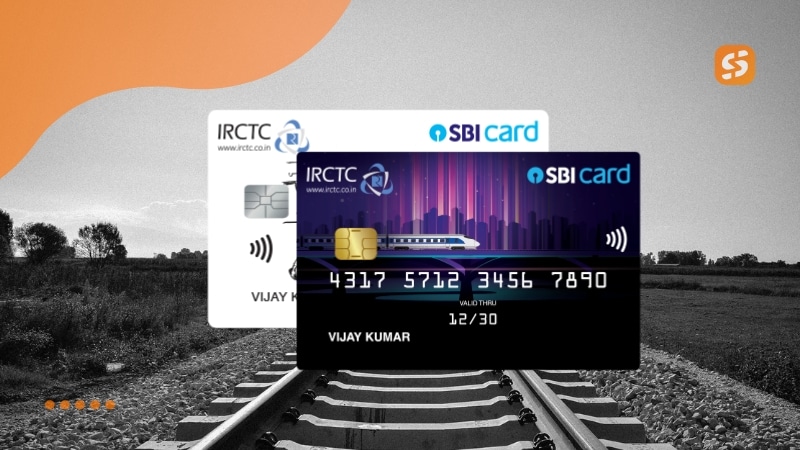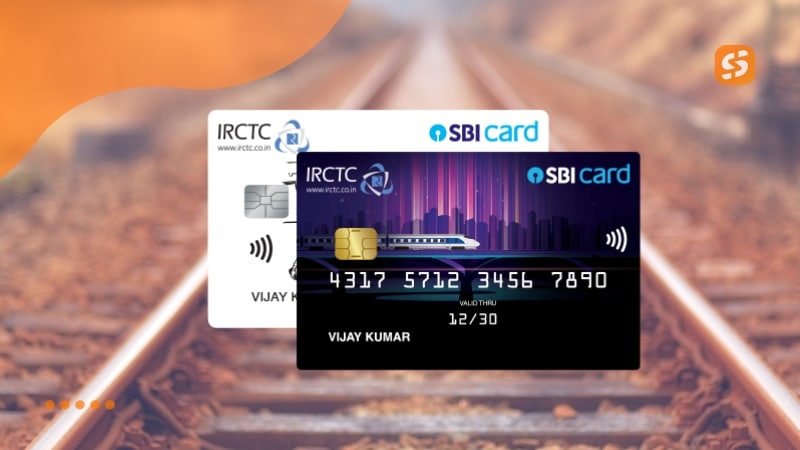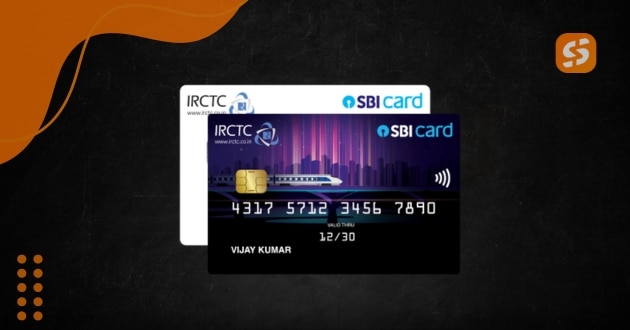Anúncios
Want to make your travels better? The SBI IRCTC Cards is a co-branded credit card, developed specifically for frequent train travelers.
Our goal today is to discuss the main SBI IRCTC Cards, detailing all relevant information about them, from benefits, fees, and the steps to apply for yours. This way, you will know everything you need about the cards.
Therefore, keep reading and understand everything about the SBI IRCTC Cards, grasp all the information in a few minutes, and be able to decide whether or not to apply for this card.
Analysis of the main SBI IRCTC Cards

Let’s start with the bank’s two main cards, the IRCTC SBI Platinum Card and the IRCTC SBI Premier Card. Let’s look at the most important information about both.
Anúncios
IRCTC SBI Platinum Card (SBI IRCTC Credit Cards)
The IRCTC SBI Platinum Card is ideal for those who prioritize train travel.
The great attraction is the promise of up to 10% reward points for tickets in AC classes (AC1, AC2, AC3, and AC Chair Car) booked on the IRCTC website or app.
However, it is crucial to note the “up to 10%”. Users in online forums report that this 10% rate is often linked to short-term promotions, making the benefit less predictable for frequent travelers.
For other purchases, the reward rate is low: 1 point for every ₹125 spent. Therefore, you will have a return of 0.8%. This indicates that the card is not intended to be the primary means of payment. It acts as a secondary card, ideal for purchasing train tickets.
As a welcome bonus, the card offers 350 reward points (each point worth ₹1) after a single transaction of ₹500 or more in the first 45 to 60 days. Other benefits include:
- 4 free annual railway lounge accesses (limit of 1 per quarter).
- 1% waiver on train ticket transaction fee.
- 1% waiver on fuel surcharge for transactions between ₹500 and ₹3,000 (limit of ₹100 per month).
IRCTC SBI Premier Card
For frequent travelers, the IRCTC SBI Premier Card is a more advantageous option. It is more sophisticated and offers superior privileges.
The main difference is the fixed 10% return on AC class train tickets purchased on IRCTC. This mitigates the unpredictability and dissatisfaction associated with the Platinum.
The Premier extends its benefits to other travel areas:
- 5% return on air tickets and e-catering purchases on the IRCTC platform.
- For general expenses, it offers 3 reward points for every ₹125 spent on meals and utility bills.
The welcome bonus is 1,500 reward points after paying the first annual fee.
The card rewards annual travel spending: 2,500 points when spending ₹50,000 and 5,000 points when spending ₹1,00,000.
You will also have the following privileges when using the card frequently:
- 8 free annual railway lounge accesses (maximum of 2 per quarter).
- Comprehensive insurance coverage, including railway accident insurance of ₹10 Lakhs, air accident insurance of ₹50 Lakhs, and fraud liability coverage of ₹1 Lakh.
As you can see, both cards focus on serving those who use the train every day. This is an extremely important factor to consider.
Fees charged on SBI IRCTC Card

The cards offer interesting benefits, but it is essential to consider the fees and the actual user experience.
The annual fee for the IRCTC SBI Platinum Card is ₹500 + taxes, for joining and renewal. For the IRCTC SBI Premier Card, the joining and renewal fee is ₹1,499 + taxes.
An important detail is that the Premier’s annual fee can be reversed with expenses of ₹2 Lakhs in the previous year.
A critical point is user perception.
User experience suggests difficulties in obtaining support in case of problems.
Reports indicate long waiting times, rude representatives, and a complicated process to close accounts, described as a test of patience.
Step-by-step to apply for SBI IRCTC Cards
If the SBI IRCTC Card is the right choice for you, see the step-by-step guide.
First, the minimum age is 21 and the maximum is 70. It is also necessary to have a regular income and, ideally, a credit score above 750.
You must also present these documents:
- Proof of Identity: PAN Card, driver’s license, Aadhaar card, or voter ID.
- Proof of Address: Passport, driver’s license, electricity bill, or phone bill.
- Proof of Income: For salaried individuals, pay stubs for the last 3 months or bank statements. For self-employed individuals, previous year’s ITR and bank statements for the last 3 months.
Furthermore, you can apply online on the SBI CINard website. The process is straightforward, and the decision is instantaneous. If approved, a representative will contact you for verification and document collection.
Moreover, after receiving the card, it is essential to link the 11-digit loyalty number to your IRCTC login.
Without this step, reward points will not be credited and cannot be used.
The process is easy: log in to your IRCTC account, enter the loyalty number, and validate with an OTP sent to your mobile phone.
It is worth noting that SBI Card highlights that data incompatibility between the card and IRCTC profiles is a common complaint.
Therefore, ensure that your information (email, mobile, and date of birth) matches in both accounts.
Conclusion (SBI IRCTC Card)
To summarize, IRCTC SBI credit cards are niche products, tailor-made for train travelers.
They offer considerable value in their primary domain, train travel, with benefits on ticket bookings, lounge access, and fee waivers.
However, the low reward rate for general spending, especially on the Platinum, makes them unsuitable for daily use, making them worse than cards like the Axis Bank Ace Credit Card.
Still, if you spend more than ₹20,000 per year on train tickets, the Premier version can be a great alternative.
Milestone bonuses and the consistent 10% rate can give you a good return.
But if you travel in non-AC classes or have a more diversified spending pattern, it might be worth looking at competitors from HDFC, BOB, and RBL, which may offer benefits more aligned with your needs.



















